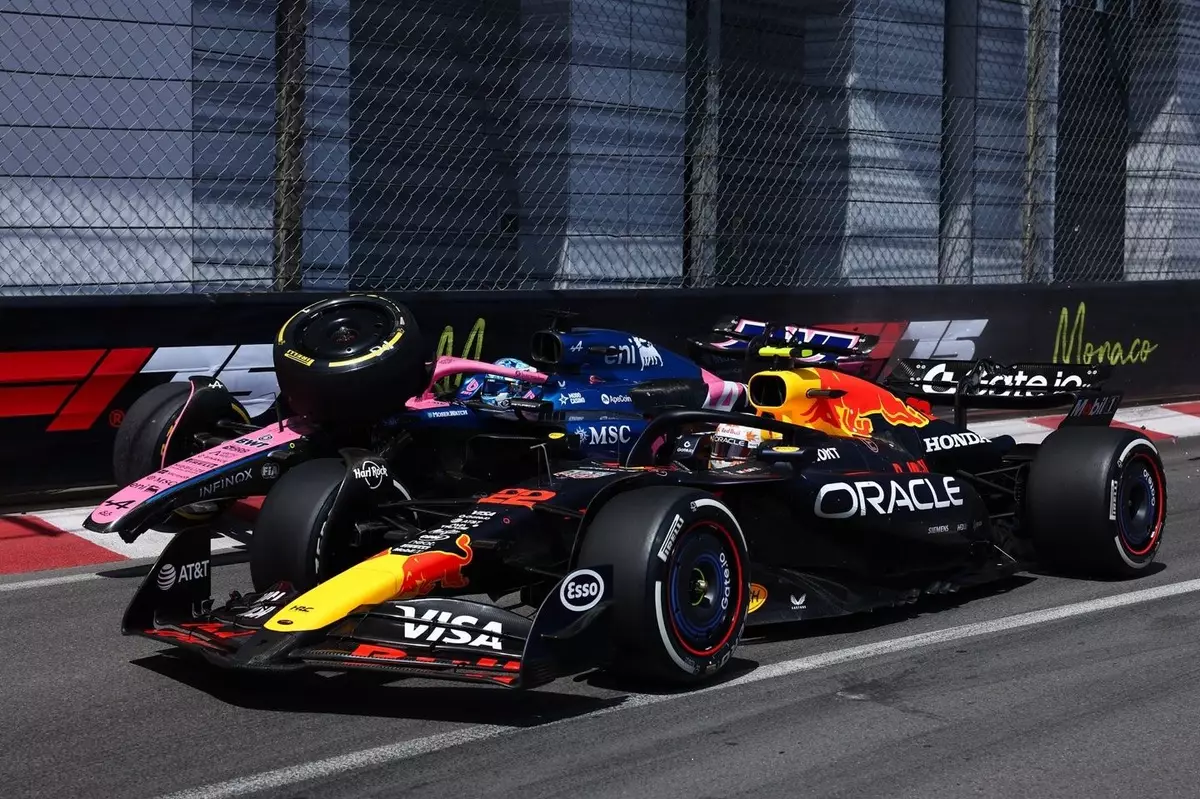In the high-octane world of Formula 1 racing, disagreements are as common as tire changes. The Monaco Grand Prix incident involving Pierre Gasly and Yuki Tsunoda is a prime example of how split-second decisions can lead to explosive outcomes both on and off the track. Gasly’s assertion that Tsunoda’s erratic maneuvering under braking directly led to the collision raises important questions not only about racing strategy but also about accountability and communication between drivers. The dynamics that unfolded during this incident reflect broader themes within competitive sports — where personal rivalries often coexist with professional respect.
Gasly characterized Tsunoda’s actions as a deviation from the racing line, suggesting that the Japanese driver failed to maintain his positioning during a crucial phase of the race. This commentary underscores an essential aspect of competitive driving: the necessity for drivers to adhere to consistent tactics to minimize the risk of collision. Gasly’s claim that he “had the brakes” serves as a reminder that racing often operates under a façade of control, with each driver seeking optimal performance amid split-second decisions and unpredictable competitor behavior.
The Contrasting Reactions
Tsunoda’s bewilderment in response to Gasly’s claims is indicative of the psychological impact that high-stakes racing has on the participants involved. His rejection of the notion that he engaged in “erratic driving” points to a broader inclination among athletes — the need to defend their actions under scrutiny. Tsunoda stated that he wouldn’t have acted differently had he been given a second chance, evoking a classic dilemma in competitive sports: the tension between individual intuition and external criticism.
This clash of perspectives exposes a rift that can occur even among teammates or former teammates, revealing how pressure can distort perception. Each driver’s interpretation of racing events can produce drastically different narratives, reflecting the inherent complexity of managing risk and decision-making in tight quarters.
The Broader Implications for Alpine Racing
Beyond the aftermath of the crash, the situation highlights the mounting challenges that Alpine faces in its pursuit of competitive excellence. Gasly’s candid admission regarding the car’s limitations, particularly its difficulty with ride compliance and handling, reveals a critical vulnerability in their strategy leading into races. The team’s performance during qualifiers, evidenced by Gasly’s dismal 18th place, additionally illustrates how track-specific features can exacerbate these weaknesses.
In an environment where team unity and communication can often be overshadowed by individual ambition, managing technical deficiencies while fostering a transparent dialogue between drivers is paramount. Gasly’s comments suggest that there is hope for improvement, especially as they transitioned from the tight, low-speed turns of Monaco to the high-speed layout of the upcoming Spanish Grand Prix. This adaptability speaks to the resilience that is required for any competitive team striving for consistency.
The Road Ahead: A Call for Unity and Improvement
Looking forward, Gasly remains hopeful regarding Alpine’s performance potential. The anticipation for the Spanish Grand Prix serves as a vital moment for reflection and recalibration. In a sport where every second counts, the challenge will rest not only on technical adjustments but also on mending the rift caused by collisions, both literal and metaphorical. This is a crucial juncture where Alpine must harness its athletes’ insights and experiences to forge a path that minimizes such incidents while maximizing their competitive edge.
In the fast-paced realm of Formula 1, teamwork is what ultimately propels teams to victory. By cultivating a culture of open communication and collective responsibility, Alpine can transform the lessons learned from Monaco into a powerful springboard for success. Each race holds the promise of new insights, but it is the commitment to growth and improvement that could define whether this team can rise above its current limitations.
In an atmosphere charged with competition, the story of Gasly and Tsunoda serves not just as a tale of a collision on the track but as a reflection of the intricate web of relationships, expectations, and the human spirit within the world of racing. Each driver must navigate that complex terrain — a task that requires both skill and a profound understanding of the dynamics at play. The willingness to learn from setbacks is what distinguishes a champion from merely a participant in the sport.

